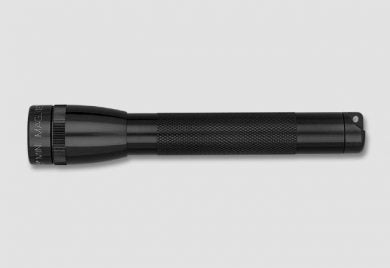The Progenitors
Tony Sculimbrene 08.28.18
)

If you have even a passing interest in gear, it is likely that you own or have owned a Buck 110, a Leatherman PST, and a Maglight MiniMag. These three products ushered in a new era of performance and convenience. But all of these products are least 30 years old. Furthermore, all of these products have been iterated upon, in some cases for decades. The result is that all of these products, while venerable and historically noteworthy, are probably not the best you can buy, even for the money.
As a bit of a thought experiment I decided to put all three items through their paces as if I were reviewing them. Some of these products, in particular the Buck 110, aren’t particularly well-suited to my daily existence. As a result, testing took quite a bit of time, sneaking them into the rotation here and there where circumstances permitted. What follows will be an appraisal of each item in terms of how they compare to each other and compare to the current versions of their product class.
Folders: Buck 110 (still in production, multiple variants)

The Buck 110 was released in 1964. Since then there have been roughly 15 million 110s made. It is a large, VERY large, folder. It has a back lock, but still needs two hands to open it. It lacks a pocket clip but is generally sold in a package that includes a sheath.
The first thing that you will notice in carrying and using the 110 is that it is positively massive. Its not just long and heavy, it is trade paperback thick. Buck does little to save weight on this knife—it has dual brass bolsters, which is basically anti-carbon fiber. The blade has a very pronounced clip point, lending the knife a surprisingly wicked look. The lockback has a very strong spring and snaps loudly when engaged. The 110 in its basic and historical form (which is the one I reviewed) sports Buck’s 420HC.
Despite its substantial size, I actually liked the 110. The steel is good, especially for the price, and the grind is quite thin. A 110 with lighter materials is available and I imagine it would be quite compelling for someone in need of a large blade. The 110 was originally designed as a hunter and though I am not one I can imagine that it would be excellent in that role. I wouldn’t carry this everyday, but on a day hike or with a pack, its still pretty darn good. Its not a Dragonfly II, but it is still very competent.
This thing is more boxy than the Borg ship that kidnapped Jean-Luc Picard. And its chock full of details that seem to indicate that cramming stuff in was more important than making that stuff functional. The knife is especially weird. When opened the blade is on the top handle, leaving a gap of a 1/2” between the cutting edge and the material it is cutting.
Comparing this to the Wave, the Charge, or, jeez, the Skeletool makes it look positively stone-aged. The PST still works, lots and lots of folks use them everyday, but I can’t help to wonder what it would be like if every person using one of them got an upgrade to a Skeletool over night. Knives that lock (and can actually get up close to the things they are cutting), tools that are well designed, and a comfortable handle all make a huge difference.
Flashlights: Maglight MiniMag (still in production, multiple variants)
Um…yeah…this thing is pretty outdated. In particular, the beam pattern and reflector are awful, and the output, even in the LED models, isn’t great. The body tube is incredibly nice—tough and well-machined. The good news is that the light’s considerable durability and age have given rise to a lot of different upgrades and aftermarket kits. For two dozen or so bucks you can make the MiniMag serviceable. Or you could just buy a better light in the first instance.
Conclusions
The 110 is plainly and clearly the best of these three items compared to contemporaries. Dropping your old 110 in a pack or a glove box gives you a solid option in all the ways that count. This is a good knife, even more than 50 years after its release. That is a tribute the solid design and Buck’s great, high value steel. The PST isn’t awful. Its not unworkable. Its just that there are so many options that are better. Leatherman’s iterative approach to product design is probably the best in the gear industry. The result of all that innovation is that lots of things change in 30 years and the PST is a perfect example of that. The Minimag is definitely the worst of three compared to its contemporaries. With a profusion of inexpensive and good lights there is really no reason to buy this. Stash it in a junk drawer and hope it gets forgotten.
This little experiment has taught me, yet again, the value of a solid, simple design. Good design is timeless. Poor performing products are acceptable only so long as the competition is equally poor. More than anything using the MiniMag has shown me just how far flashlight tech has come.

